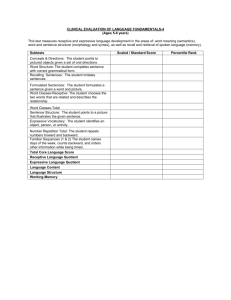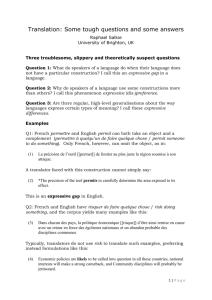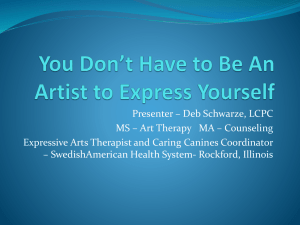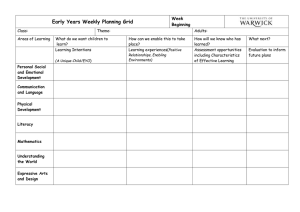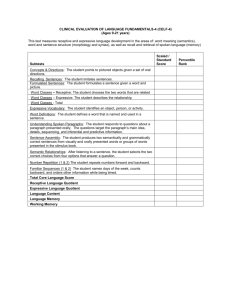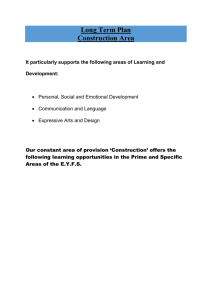Getting started – support for reflection and engagement expressive arts
advertisement
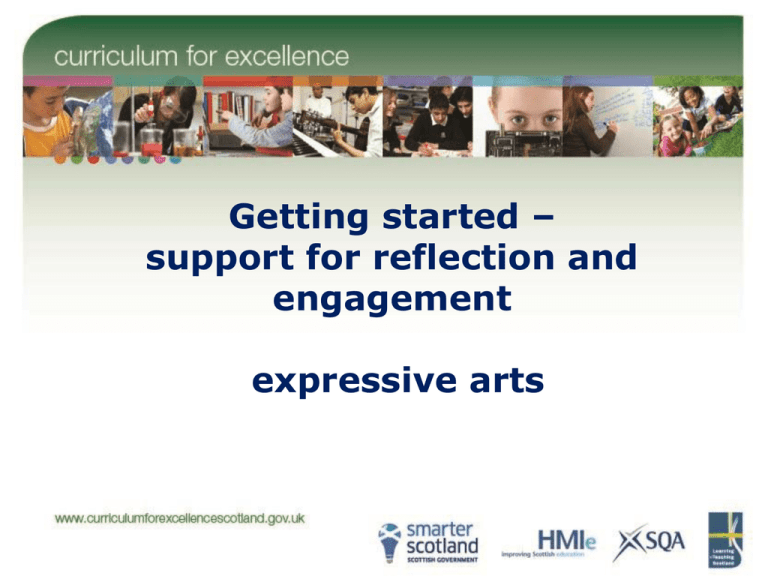
Getting started – support for reflection and engagement expressive arts What changes have been made since the publication of the draft expressive arts framework? What was said? What was done: • The presentation of the framework should be simplified to make it more easily understood. • Grids added, generic statements embedded within the experiences and outcomes. • The words 'magic, wonder and power' should be removed. • Replaced with ‘inspiration and power of the arts’. • Edit the language of several of the outcomes. • Several outcomes amended to improve cogency. • Further advice on skills development. • Statement on skills development included in introductory statement. • Further explanation required for complex/technical language. • Appendix containing explanations and glossary added to experiences and outcomes. Reflecting on the principles and practice in expressive arts • What can learning in the expressive arts achieve for children and young people? • What are the broad features of assessment in the expressive arts? • How are the expressive arts connected with the other areas of the curriculum? • How important is inspiration and enjoyment? • How can the expressive arts contribute to the curriculum in its broadest sense? How are the experiences and outcomes structured in expressive arts ? In expressive arts there are: • Five introductory statements • A set of experiences and outcomes for presenting and performing covering all the expressive arts • Four organisers • Appendix – explanations and glossary. The four organisers are: • Art and design • Dance • Drama • Music. Experiences and outcomes in expressive arts • Why do some statements cross more than one level? These describe learning which needs to be revisited, applied in new contexts and deepened over a more extended period. • Why is there a dotted line between third and fourth level? This is to demonstrate the close relationship and likely overlap between the two levels. Fourth level will provide the depth of experiences based on prior learning from third level. • Why are there sometimes fewer statements at third level than in second and fourth? This happens because of the particular significance of the third level as part of the entitlement for all young people. They represent a drawing together of a number of aspects of learning within expressive arts. Getting started in expressive arts: some questions for discussion • Building on your current practice, what are the implications for what and how you teach? • How will you ensure the needs of all learners are met? • Which experiences and outcomes could you link within expressive arts, across other curriculum areas and the world of work to provide a coherent experience for learners? • How might you ensure that learning and teaching reflects the values, purposes and principles of Curriculum for Excellence? • How will you develop partnerships with professional arts companies? Where do you go from here? The journey may be different for everyone, but you may wish to consider some first steps towards change, for example: • identifying and sharing effective practice • identifying and prioritising professional development needs • experimenting with learning and teaching approaches.
